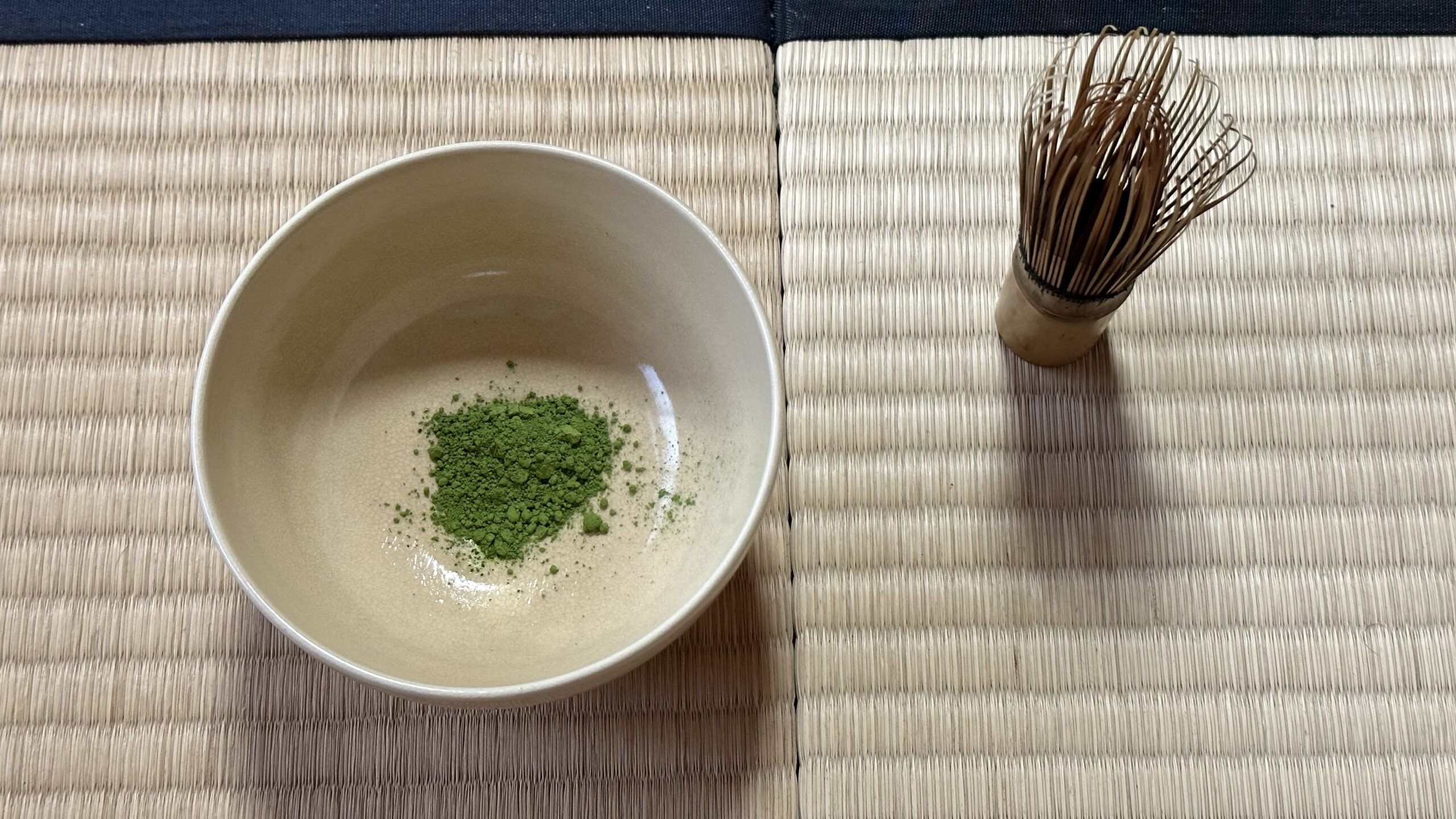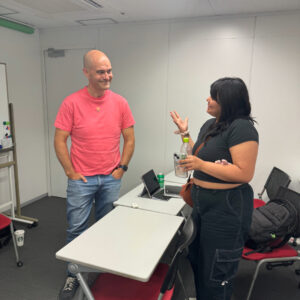
Chanoyu tools
In Japanese, chanoyu means “hot water for tea.” English speakers have decided to translate the expression to “tea ceremony,” but — as tea masters will inform you— chanoyu is simply one of life’s pleasures.
The history of tea is long— just like traditional bookbinding— so if you’re curious for more details, read this brief article.
But here’s the breakdown: tea was first enjoyed by Chinese Buddhist monks. The monks would come together for games in which the drinker guessed the type of tea. When the shogun of Japan’s “Warring States Period” came to power, this partying shifted to the calm, relaxing event we have today.
In Kyoto, there are old, wise tea masters that dedicate their lives to the art of chanoyu. They spend years studying matcha, pottery, folklore and, of course, the careful chanoyu steps. Even though there is no shogun or war, chanoyu has become a pleasurable hobby! Tea masters have opened their tea houses to foreigners, so they can experience a tea master’s passion.
Here’s what to expect in chanoyu:
Guests will be asked to remove their shoes, before reaching the tatami mat. Once in the tea room, the tea master will begin boiling the water as guests sit around the mat, leaving a forearm’s length of space between a line of black fabric and their legs. As everyone settles in, the tea master will begin to share the history of tea.
Once the story is told, the tea master uses a bamboo whisk to froth the matcha in uniquely designed ceramic bowls. Every guest receives a bowl from the tea master who explains the art of each one; there is a reason for every animal, flower and color. The bowls even change with the seasons!
Before enjoying the matcha, there are a lot of traditional practices every guest must follow. The guest closest to the tea master is to lift the bowl— with both hands— from across the black fabric and set it to their front left before saying to their neighbor, “I’m sorry for going before you.”
Then, that same guest lifts and sets the bowl in front of themselves, behind the black fabric. The guest will then bow forward and thank the tea master: “Thank you for the tea.”
After the formalities are done, the guest lifts the bowl with their left hand on the bottom and right hand on the side; they rotate the bowl clockwise twice and raise it for a taste. (Fun fact: when the matcha is almost gone, it is custom to softly slurp the last sip!) Now that the matcha has been enjoyed, the guest rotates the bowl twice— counter-clockwise— before returning it to its original position. This is so the design of the bowl can be displayed for the remaining guests to enjoy.
From there, each guest follows the same rites, but with additional formality:
“I will join you.”
After all, this is a pleasurable moment for everyone in chanoyu! No one should miss out.
However, before you try to send a picture, video, snap, or any digital record to your friends and family, there is an important rule you should respect:
No phones, no cameras, and no recording.
Avoiding the expectations will take away the purpose of a tea master’s work. This is a time of presence. It’s a time to turn off your devices and enjoy.
Once all the guests have enjoyed the tea master’s matcha, they will have a chance to try whisking some themselves! Don’t worry if yours has a clumpy texture. Remember: it took years for the tea master to become a master of matcha. Just do your best and have fun!
With that being said, get ready to sit “criss-cross applesauce” and turn your listening ears on. Everything the host shares is worth every moment. Now— get out there and plan your Tea House party!
Reserve a spot for your next trip to Kyoto here.







